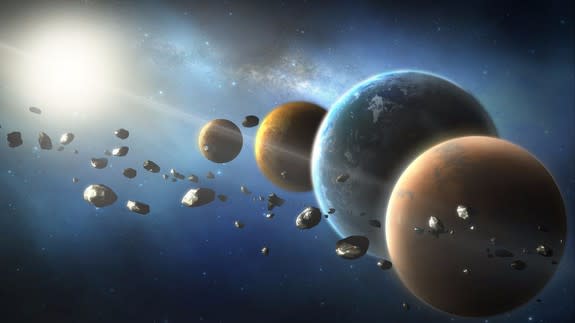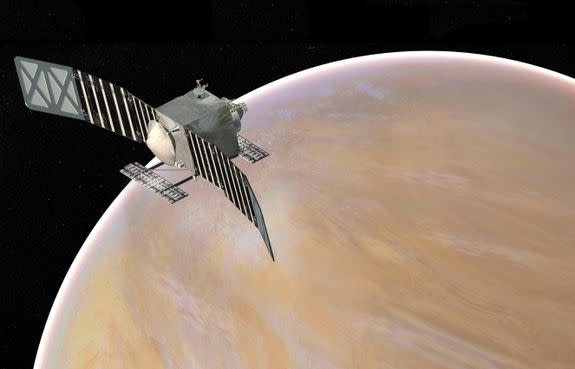We're about to find out what part of the solar system NASA will explore next

Where do you want to go in the solar system? Venus? A metal-rich asteroid? Well, on Wednesday, NASA will tell us where it's going next.
The space agency is set to announce its choice for one (or possibly even two) of its next big robotic missions that will push our understanding of the solar system to new heights.
SEE ALSO: Mars, Venus and the moon are having a cosmic meet-up this week
The missions — which were proposed under the agency's Discovery program — could send a spacecraft to Venus, asteroids or on a hunt for possibly dangerous cosmic objects near Earth by the early 2020s.
In 2015, NASA announced the five finalists for this Discovery program mission, and since then, the agency has given each mission $3 million for "concept design studies and analyses," according to a NASA statement.

Image: NASA/JPL-Caltech
And now the moment of truth has arrived. NASA will announce which mission (or missions) it has chosen for full development during a press conference at 4 p.m. ET on Wednesday. (You can listen to it live via NASA.)
In NASA's words, the possible missions are:
Here's something else that's pretty cool about these missions: Four of the five are led by women, which ain't too shabby considering the fact that women have historically been underrepresented in space science.
These five missions were picked from 27 proposals submitted to the agency in 2014, and if chosen, the missions are expected to cost a total of about $500 million. (For reference, the Mars-exploring Curiosity rover cost about $2.5 billion.)

Image: NASA/JPL-Caltech
Whichever mission is selected will be in good company.
The Discovery program, created in 1992, was responsible for launching the Messenger spacecraft to Mercury, the Kepler telescope to search the sky for alien planets around distant stars and other missions to far-flung parts of the solar system.
Now it's time to see what comes next.
